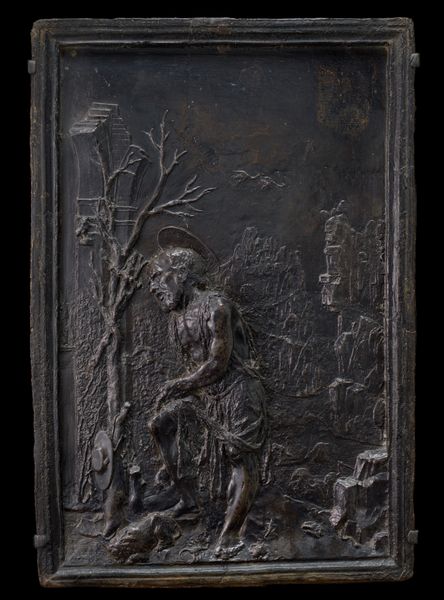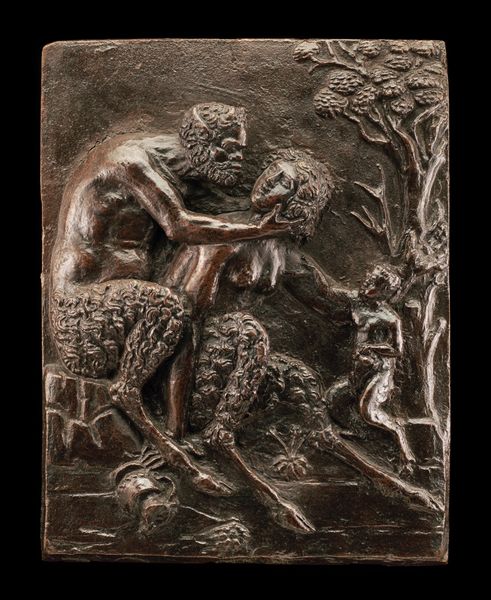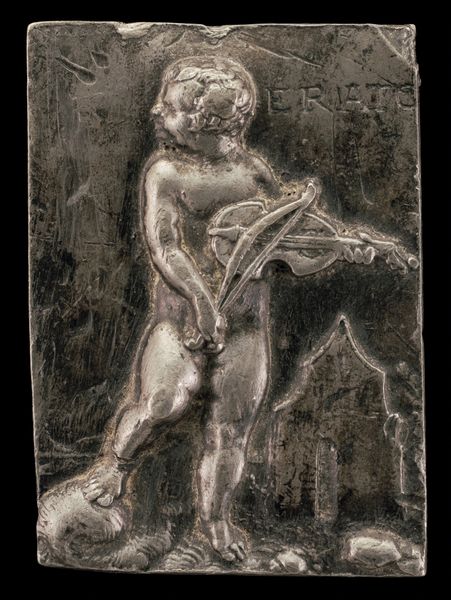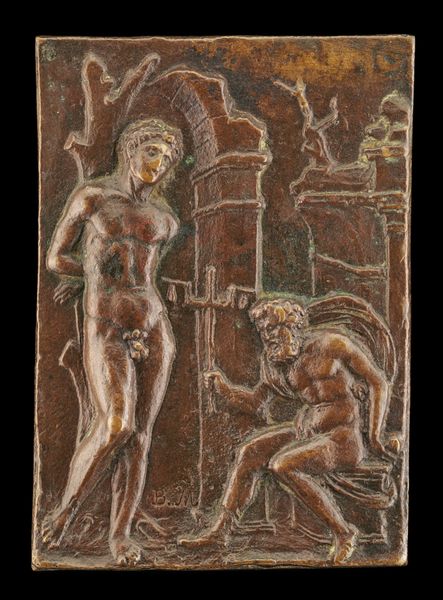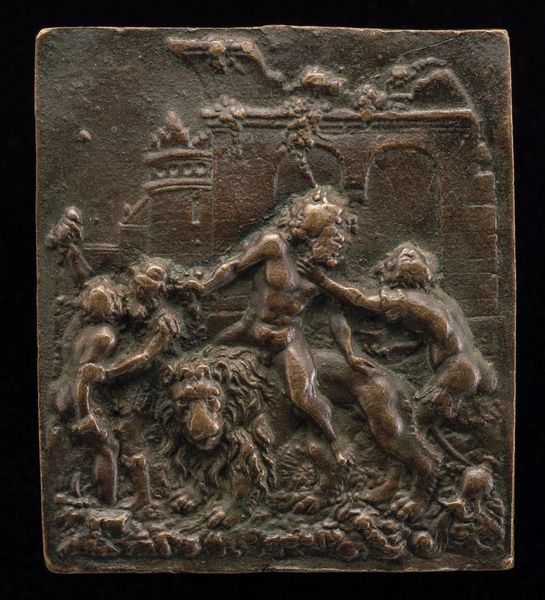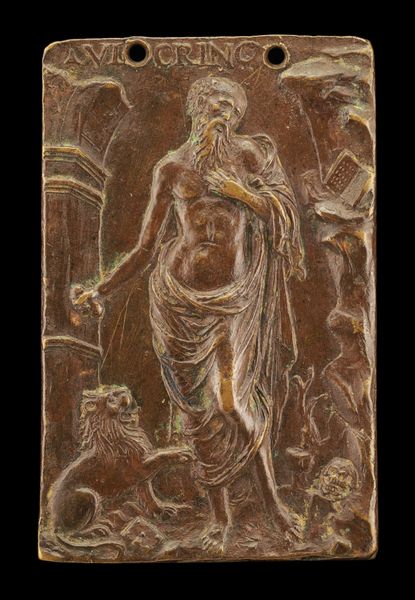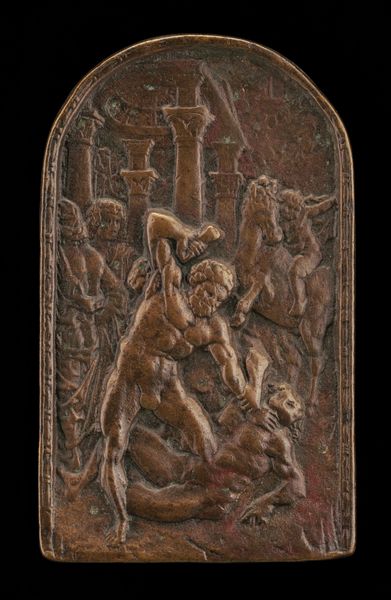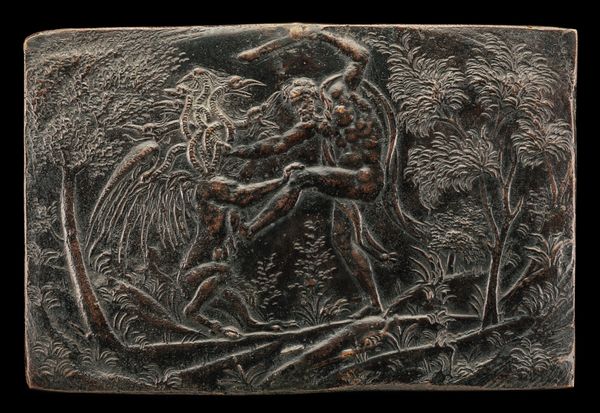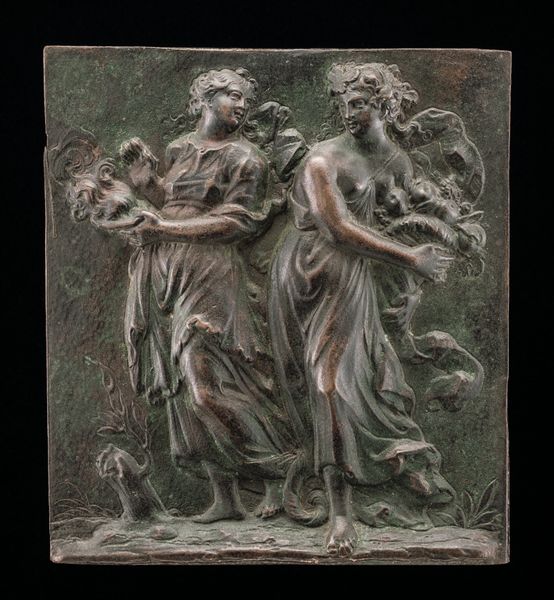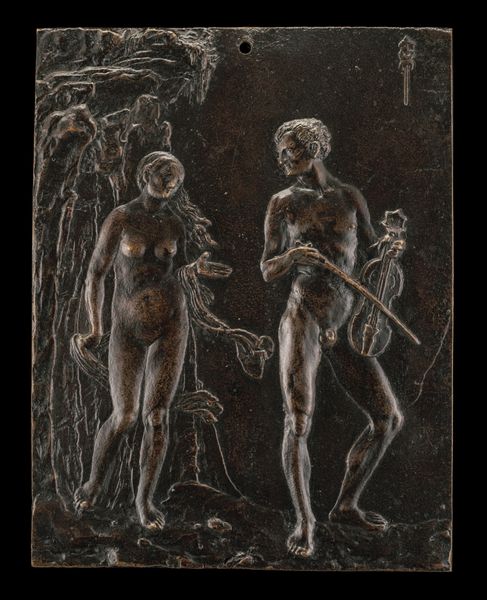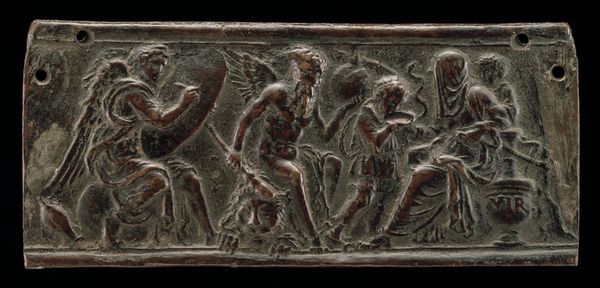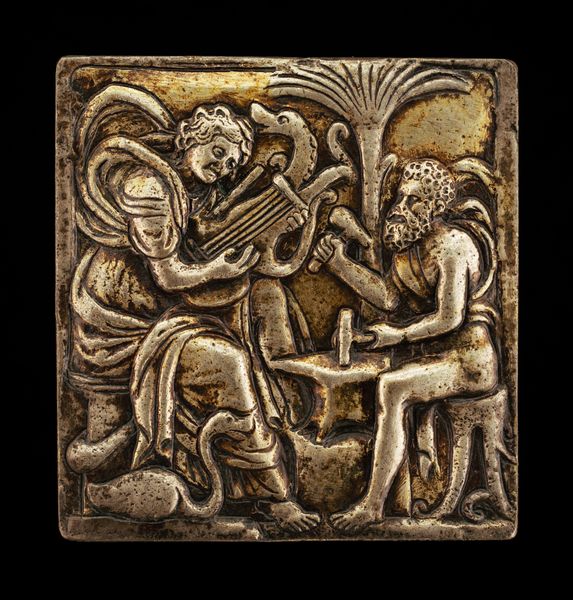
relief, bronze, sculpture
#
narrative-art
#
sculpture
#
relief
#
classical-realism
#
bronze
#
figuration
#
sculpture
#
history-painting
#
italian-renaissance
Dimensions: overall: 7.03 × 5.14 cm (2 3/4 × 2 in.) gross weight: 57.27 gr (0.126 lb.)
Copyright: National Gallery of Art: CC0 1.0
Editor: So, this is "Hercules and Antaeus," a bronze relief from the early 16th century. The way Hercules is hoisting Antaeus looks... well, brutal. What do you see in this piece? Curator: I see a potent allegory about power, and its reliance on denying others their source of strength. Antaeus, you see, drew his power from the earth, his mother, Gaia. Hercules, representing a patriarchal order, can only defeat him by severing that connection. It speaks volumes about the strategies used to subjugate and dominate, doesn't it? Editor: I suppose. I was just thinking about the muscles! But it’s more than just a physical contest, right? It’s about control… Curator: Precisely! And the architectural elements, those crumbling classical forms... Are they not a commentary on the foundations upon which this power is built? Look at how Vicorino, perhaps the artist or patron, chose to put his name so boldly at the top. What statement do you think he wanted to make about himself? Editor: Interesting. It makes you wonder if he was conscious of his own power… or lack of it? Curator: Or perhaps signaling his allegiance to the rising powers? These sculptures were, after all, often commissioned by those seeking to align themselves with particular narratives, ideologies, and ultimately… power. We should consider who would have been viewing this work in the 16th century. How would they have related to Hercules as a symbol of masculine dominance? Editor: Wow. It completely changes how I see it now. It's not just a myth; it’s a political statement. Curator: Exactly. Art becomes a mirror, reflecting the anxieties and aspirations of its time. Editor: Thanks. Now, looking at it again, I’m picking up more on the underlying themes of control and domination than the visual drama of the struggle. Curator: And hopefully understanding how the context in which it was made and viewed plays an active part in shaping how we interpret such artworks today!
Comments
No comments
Be the first to comment and join the conversation on the ultimate creative platform.
